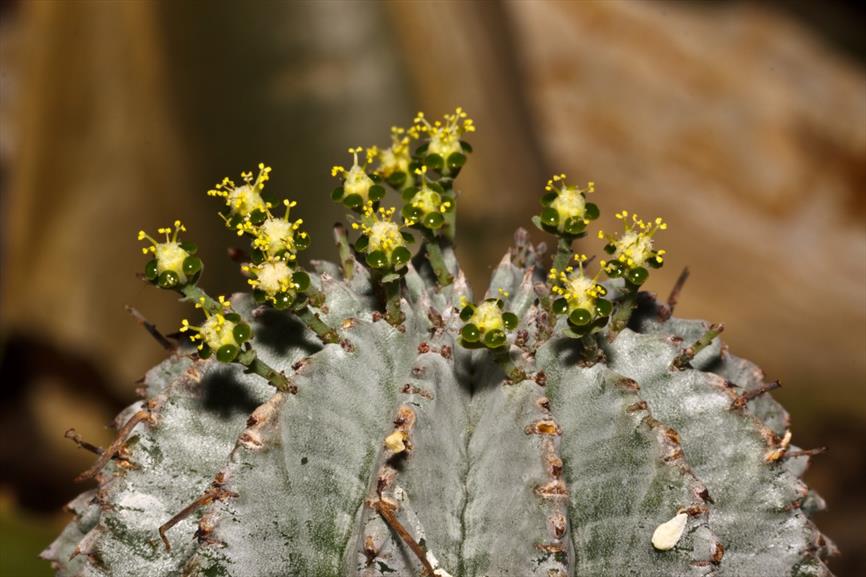African Milk-barrel
Euphorbia polygona var. horrida
Spurge family (Euphorbiaceae)
Host to a parasitic mistletoe
Euphorbia polygona var. horrida has a stem with many spines and outwardly resembles a cactus. The plant is named after its 4 cm long spines (horrida). As an extra deterrent the plant contains a toxic milky sap. The species is a textbook example of evolutionary adaptation to a dry, barren environment with herbivores. Whereas in America cacti have evolved to live in these habitats, in Africa and Europe they support the succulent spurges.
Euphorbia polygona var. horrida is the host for parasitic mistletoe, Viscum minimum, which becomes obvious because its produces orange berries visible on the stem of the Euphorbia. This mistletoe only grows on Euphorbia polygona var. horrida and its close relative Euphorbia polygona. Given the mistletoe’s preference, it is perhaps a better botanist than the authors who originally described E. horrida because the latter species has now been lumped together with E. polygona.
Read more.... »Themes
African milk barrel has 4 cm long spines (horrida) and as an extra deterrent the plant contains a toxic milky sap.
Details
| Description: | Succulent, up to 0.75 m, dioecious. |
|---|---|
| Distributions: | South africa |
| Habitat: | In very dry mountainous vegetation (20-290 mm rain per year). |
| Year cycle: | Perennial (trees and shrubs included) |
| Hardiness: | 34 - 41 f (tender - cool or frost-free glasshouse) |
| Flower color: | Yellow, green |
| Notes on flowers: | Small, green with yellow flowers. |
| At its best: | September - oktober |
